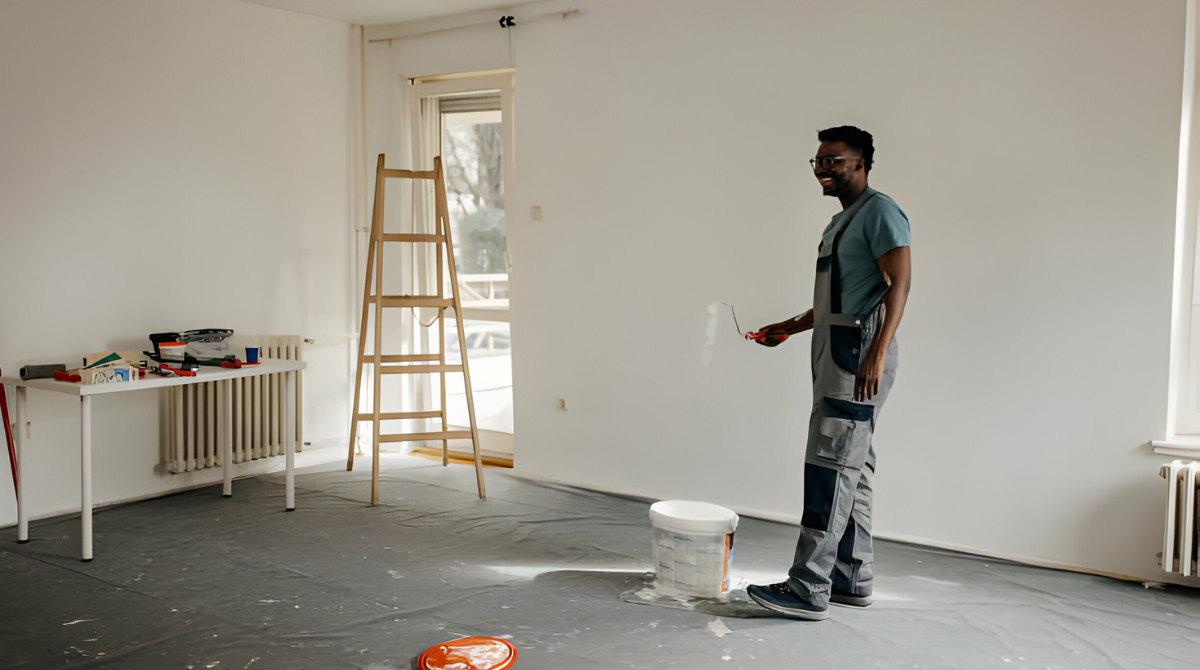
When to Hire a Pro and When to Tackle It Yourself
In this comprehensive guide, we will delve deeply into the pros and cons of DIY painting versus hiring a professional painter, providing comprehensive insights to help you make an informed decision based on your specific needs and circumstances. Painting is often considered one of the most accessible home improvement projects, offering homeowners the opportunity to refresh and revitalize their living spaces with a fresh coat of paint. However, the decision to tackle a painting project yourself or hire a professional painter involves careful consideration of factors like skill level, project complexity, time constraints, and budget.
Assessing your own abilities and expertise in-depth is the first step towards deciding whether to hire a professional painter or take on a DIY painting project.
Recognizing the Project’s Extent and Complexity
Determining the scope and complexity of the painting project will help you decide whether DIY painting is feasible or if it is best to leave it to the pros. Painting a single room with simple walls and few obstacles may be well within the capabilities of a DIY enthusiast, while larger or more complex projects, like painting multiple rooms, high ceilings, or intricate trim work, may require the expertise of a professional painter.

Evaluating Your Time and Availability
Evaluating your time and availability is a crucial aspect when considering whether to undertake a painting project yourself or hire a professional. Painting requires a significant time commitment, from preparation and painting to cleanup and drying time. Here are some key factors to consider when evaluating your time and availability for a painting project:
- Project Size and Complexity
- Time Constraints
- DIY Skills and Experience
- Personal Preferences and Priorities
- Long-Term Commitment
Comparing DIY vs Professional Painting Costs
When making decisions about painting projects, cost is often a major consideration. Painting yourself may seem like a more cost-effective option up front because it eliminates the labor costs associated with hiring a professional painter, but you should always take the project’s total cost into account, including the cost of materials, tools, and your time. Painting projects that are DIY may need multiple coats of paint or touch-ups to achieve the desired finish, which could result in higher material costs and ultimately higher overall expenses. Painting professionally may require more money up front, but it can save you time and guarantee a high-quality finish that will last for years to come.
Recognizing the Advantages of Employing a Skilled Painter
While DIY painting may seem like a more affordable option, there are many benefits to hiring a professional painter that can justify the investment. Here are some important benefits to take into consideration when deciding whether to take on a painting project yourself or enlist professional assistance.
Expertise and Experience
- Professional painters possess extensive expertise and experience in all aspects of painting, from surface preparation and paint selection to application techniques and finishing touches.
- They understand the nuances of different surfaces and materials and can recommend the most suitable products and techniques to achieve optimal results.
- Professional painters are trained to deliver flawless, professional-quality finishes that enhance the aesthetic appeal and longevity of your painted surfaces.
Time Savings
- Hiring a professional painter can save you valuable time and effort by delegating the painting project to skilled professionals who can complete the job efficiently and effectively.
- Professional painters have the resources and manpower to tackle painting projects of any size or complexity, minimizing disruptions to your daily routine and expediting the project timeline.
- By entrusting the painting project to professionals, you can focus on other priorities and responsibilities while enjoying the convenience of a professionally executed paint job.
Quality Workmanship
- Professional painters adhere to industry best practices and quality standards to deliver superior workmanship and exceptional results.
- They have access to high-quality materials, tools, and equipment, ensuring optimal adhesion, coverage, and durability for your painted surfaces.
- Professional painters employ meticulous attention to detail and precision techniques to achieve smooth, even finishes and crisp, clean lines that enhance the overall appearance of your space.
Long-Term Value and Investment
- Investing in professional painting services can enhance the long-term value and appeal of your property by maintaining and preserving the integrity of your painted surfaces.
- Professional painters use premium-quality paints and coatings that are formulated to withstand the rigors of everyday wear and tear, providing lasting protection and durability.
- A professionally painted interior or exterior can enhance curb appeal, boost property value, and create a positive impression on potential buyers, making it a worthwhile investment in the overall value and marketability of your home.
Recognizing the Project’s Extent and Complexity
When choosing whether to paint the project yourself or employ a professional painter, it is important to understand its extent and complexity. There are a number of criteria to take into account when assessing the project’s scope and difficulty:
Surface Area
- Calculate the entire surface area that needs painting, taking into account the trim, doors, walls, ceilings, and other architectural elements.
- Examine how big and how they are laid out, taking note of any alcoves, sunken sections, or hard-to-reach places that might need extra care.
Surface Readiness
- Examine the surfaces that are going to be painted, taking note of any stains, paint, or damage that would need to be fixed or prepared for painting.
- Take into account the quantity of surface preparation work required to guarantee a smooth and long-lasting paint finish, including cleaning, sanding, patching, caulking, and priming.
Types of Surfaces
- Determine the surfaces that need painting, including metal, wood, stucco, drywall, plaster, and brick.
- Check for any unique materials or surfaces—such as textured walls, glossy finishes, or previously painted surfaces—that call for particular painting or preparation methods.
Design Complexity
Consider the complexity of the design or painting technique you want to achieve, such as
- Simple Painting: For the do-it-yourself enthusiast, painting walls and ceilings in a single color with a standard finish may be a fairly easy project.
- Detailed Finishes: The job can require specific knowledge and abilities if you are painting ornamental features like stencils, murals, or faux finishes, or if you are combining complex patterns, designs, or many colors.
- Specialty Surfaces: If you’re painting surfaces with unique textures, such as exposed brick, rough wood, or metallic surfaces, or if you’re using specialty coatings or finishes, additional preparation and application techniques may
In Summary
In summary, knowing the extent and complexity of your painting project will help you decide whether to take on the task yourself or hire a professional painter. You can choose the best course of action for your unique needs and circumstances by carefully weighing factors like surface area, preparation requirements, type of surfaces, design complexity, height and accessibility, time and resources, permits and regulations. Hiring a professional painter may be the best course of action to ensure a successful outcome if the project is large, complex, or calls for specialized skills or equipment. Professional painters bring knowledge, experience, and resources to the table, delivering superior workmanship and quality results while saving you time, effort, and stress.

